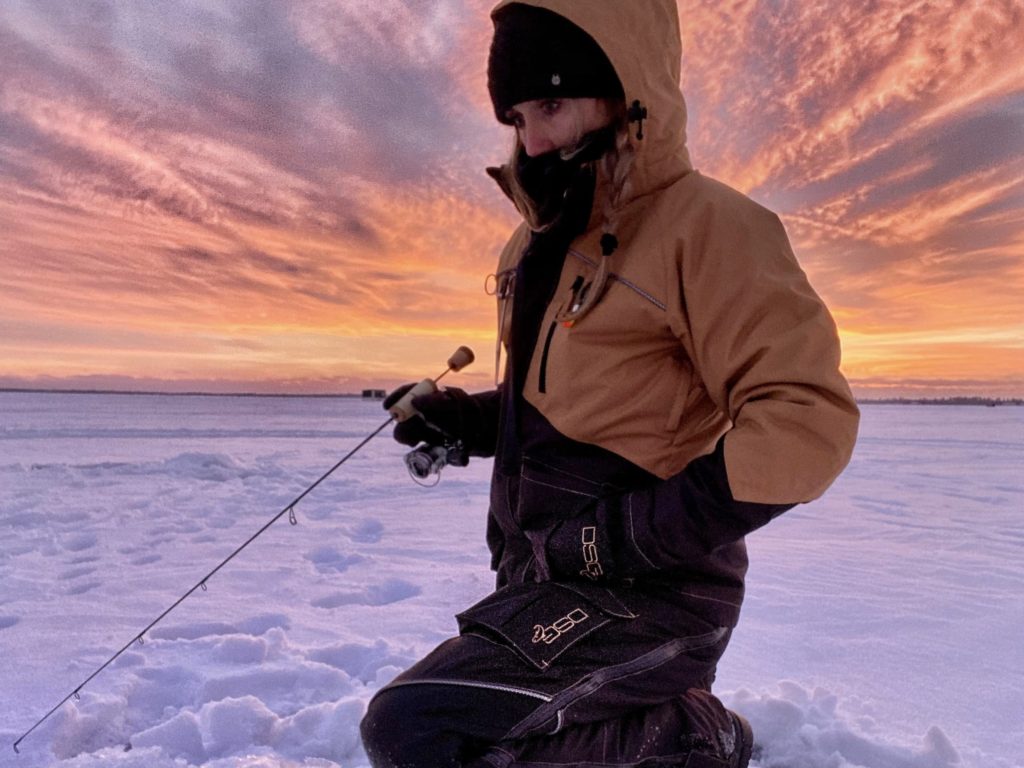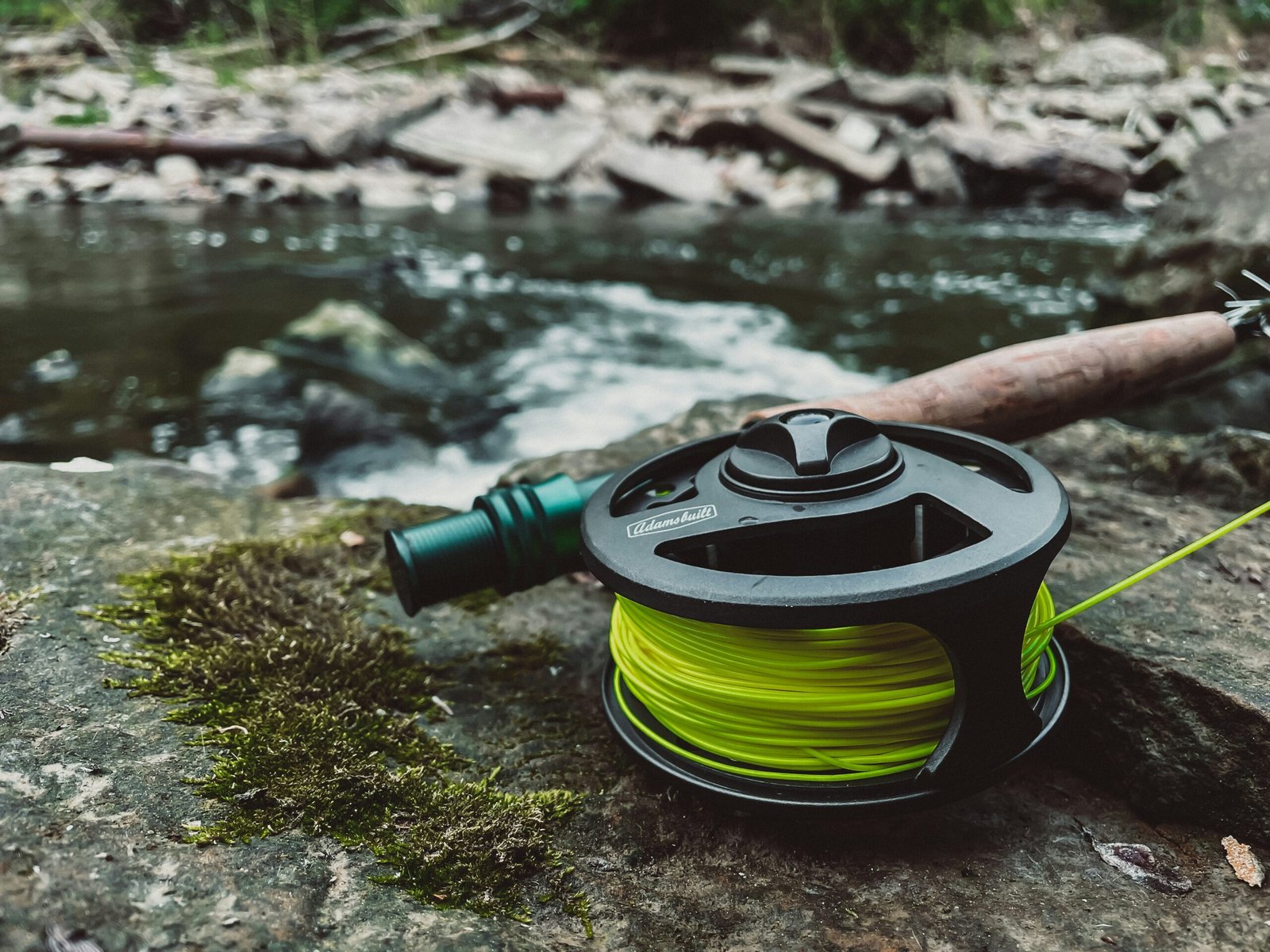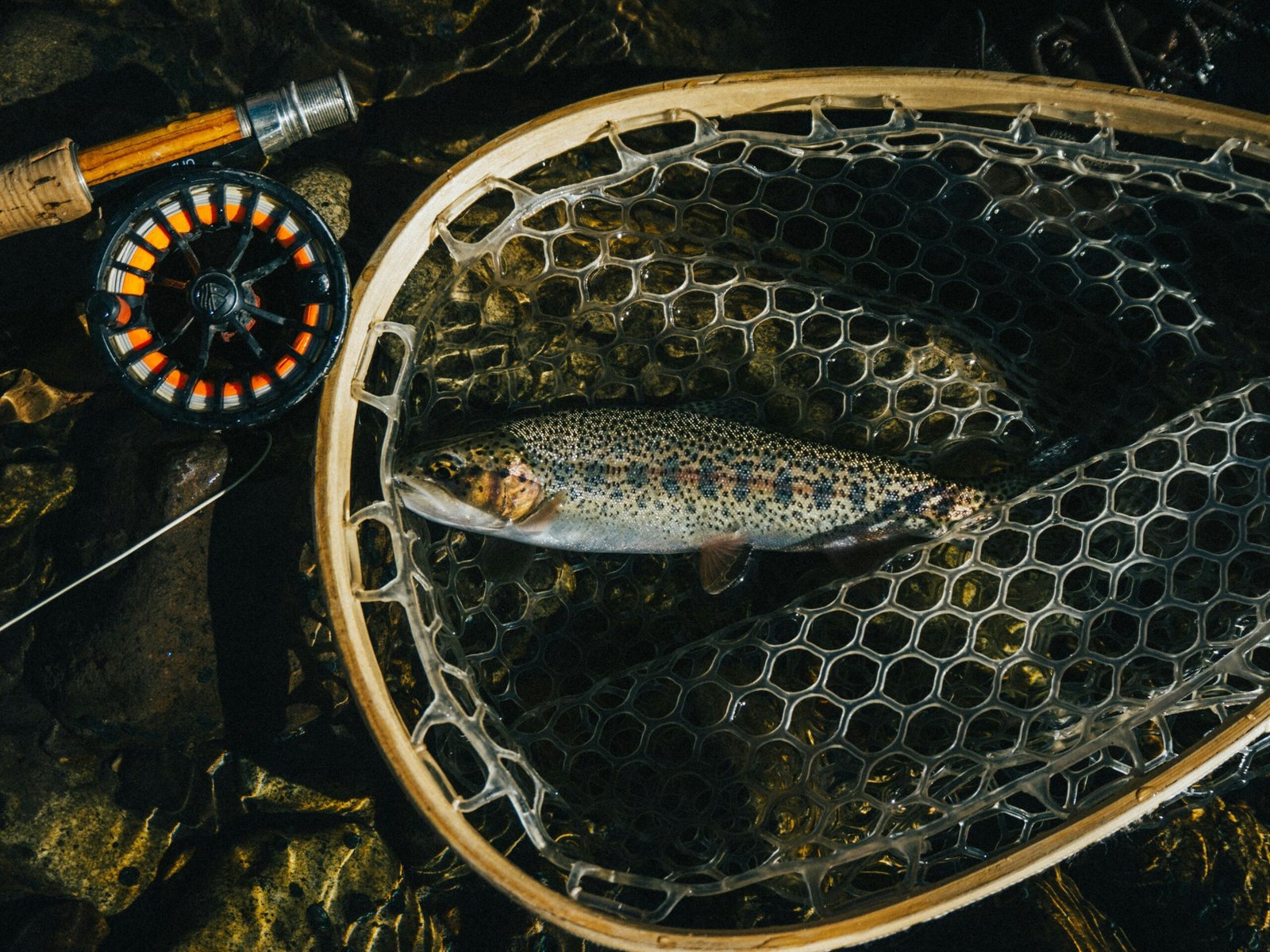There's nothing quite like the feeling of finally catching a big fish. But before you can reel it in, you need to make sure your line is secure. That's where the art of tying fishing knots comes in. Whether you're a beginner or a seasoned angler, mastering the art of knot tying is essential to your success on the water. But with so many different knots to choose from, it can be overwhelming to know where to start. That's why we've put together this guide to help you learn the tips and tricks for tying fishing knots like a pro. From the simple and reliable clinch knot, to the more complex blood knot, we'll cover everything you need to know to ensure your knots are strong, secure, and ready to help you hook, line, and sinker that next big catch.
So grab your fishing gear, and let's get started!

Importance of Tying Fishing Knots Correctly
The Key to Success: Tying Fishing Knots Properly
Tying fishing knots correctly is a fundamental aspect of angling that should never be underestimated. It can be the difference between triumph and disappointment, between a tale of the one that got away and a proud display of your fishing prowess. As an angler, it's crucial to understand the significance of mastering the art of knot tying, ensuring your knots are secure, reliable, and capable of withstanding the challenges that lie ahead.
The Tighter, the Better: A Lesson in Knot Security
When it comes to tying fishing knots, one golden rule reigns supreme: tightness is paramount. A loose or sloppy knot is an invitation for disaster. It can easily slip, unravel, or break under pressure, leaving you with empty hands and a sinking feeling of missed opportunity. In contrast, a well-tied, snug knot provides the necessary strength to endure the fierce resistance of a battling fish. It maintains a firm grip, allowing you to exert control over your catch and increase your chances of a successful landing.
Choosing Wisely: The Right Knot for the Right Occasion
Not all fishing knots are created equal. Each knot possesses its own unique set of strengths and weaknesses, making it essential to select the appropriate knot for the specific fishing situation you find yourself in. Whether you're tying the line to a hook, lure, swivel, or connecting two lines together, choosing the right knot can make a world of difference.
By understanding the characteristics of different knots, you can tailor your choice to match the demands of your fishing technique. For instance, the improved clinch knot is renowned for its versatility and reliability, making it an excellent choice for various applications. Meanwhile, the Palomar knot is renowned for its simplicity and strength, making it ideal for securing your line to a hook or lure with confidence. By selecting the right knot, you can maximize your chances of success and minimize the risk of heartbreak.
Practice Makes Perfect: Mastering the Art of Knot Tying
As with any skill, practice is the path to mastery. Tying fishing knots is no exception. When you first embark on your knot-tying journey, it may feel unfamiliar and daunting. However, with perseverance and dedication, you will gradually develop the dexterity and muscle memory necessary to tie knots effortlessly.
The key is to practice regularly, setting aside time to hone your skills. Find different knots that suit your fishing needs and devote yourself to mastering each one. Start with the basics, such as the improved clinch knot or the Palomar knot, and gradually expand your repertoire. Experiment with different line types and thicknesses to familiarize yourself with their behavior when tied into various knots. Remember, practice not only builds competence but also boosts your confidence on the water.
Types of Fishing Knots
There are many different types of fishing knots, each with its own strengths and weaknesses. Some knots are designed for attaching your line to your hook or lure, while others are used to join two lines together or create a loop in your line. Here are some of the most common types of fishing knots:
The overhand knot
The overhand knot is one of the simplest and most basic knots in fishing. It's used to create a loop at the end of your line or to tie your line to a hook or lure. To tie an overhand knot, simply create a loop in your line and pass the end of the line through the loop. Then, pull the knot tight.
The uni knot
The uni knot is a versatile knot that can be used for a variety of purposes, including tying your line to a hook or lure, joining two lines together, or creating a loop in your line. To tie a uni knot, start by passing your line through the eye of your hook or lure. Then, wrap the line around itself and the standing line several times, making sure to leave a small loop at the end. Finally, pass the end of the line through the loop and pull the knot tight.
The palomar knot
The palomar knot is a strong and reliable knot that's great for attaching your line to a hook or lure. To tie a palomar knot, start by doubling your line and passing the end of the line through the eye of your hook or lure. Then, tie an overhand knot in the doubled line, making sure to leave a large loop. Finally, pass the end of the line through the loop and pull the knot tight.
Advanced Fishing Knots – Bimini Twist, Double Uni Knot, and Albright Knot
Advanced fishing knots are designed for specific situations where extra strength or flexibility is required. Here are three advanced fishing knots that every angler should know:
Bimini Twist
The Bimini Twist is a knot that's used to create a double line, which is stronger and more flexible than a single line. To tie a Bimini Twist, start by creating a loop in your line. Then, twist the loop several times to create a second loop. Finally, pass the second loop through the first loop and pull the knot tight.
Double Uni Knot
The Double Uni Knot is a strong and easy-to-tie knot that's great for joining two lines together. To tie a Double Uni Knot, start by overlapping the two lines you want to join. Then, tie a uni knot in one of the lines, making sure to leave a small loop at the end. Repeat the process with the other line. Finally, pass the two loops through each other and pull the knots tight.
Albright Knot
The Albright Knot is a knot that's used to join two lines of different materials or diameters. To tie an Albright Knot, start by doubling the thicker line and making a loop. Then, pass the thinner line through the loop and wrap it around the thicker line several times. Finally, pass the thinner line back through the loop and pull the knot tight.
Knot-Tying Techniques for Specific Species of Fish
Mastering the Art of Knot Tying: A Tailored Approach
When it comes to fishing, knowing how to tie the right knot for the job is an invaluable skill. Different species of fish present unique challenges, requiring specific knot-tying techniques to ensure a secure connection between your line and the target. Let's explore some specialized knots tailored for specific types of fishing, from battling big game fish to luring elusive trout.
Conquering the Giants: Knots for Big Game Fishing
Big game fishing is an exhilarating pursuit that demands robust knots capable of withstanding the immense power of massive fish. One popular knot for this purpose is the Bimini twist, a double-line knot that forms a strong loop. This knot is particularly useful when targeting species like marlin, tuna, or sailfish, as it provides exceptional strength and prevents line slippage under extreme tension. With the Bimini twist, you can engage in epic battles with confidence, knowing your knot won't let you down.
Another reliable option for big game fishing is the Albright knot. This knot is commonly used to connect different types of lines, such as a monofilament leader to a braided mainline. Its streamlined design ensures a smooth connection that passes effortlessly through rod guides, reducing the risk of line breakage during intense fights. The Albright knot is a go-to choice when pursuing formidable adversaries in the open ocean.
Outsmarting Elusive Prey: Knots for Trout Fishing
Trout fishing requires finesse and subtlety, as these crafty fish are known for their keen senses and elusive nature. To enhance your chances of fooling these wily creatures, certain knots come into play.
One such knot is the Clinch knot, a simple yet reliable option. It is perfect for attaching flies or lures to the tippet, providing a secure connection that allows your presentation to drift naturally. The Clinch knot's versatility and ease of tying make it a favorite among trout anglers seeking a quick and effective solution on the water.
Another knot frequently employed by trout enthusiasts is the Nail knot. This knot excels in attaching a leader to a fly line, ensuring a smooth and seamless transition between the two. Its compact profile allows for efficient casting and accurate presentations, granting you an edge when targeting trout in various settings, from crystal-clear streams to pristine mountain lakes.
Tips for Tying Fishing Knots in Different Conditions
Tying fishing knots can be tricky in certain conditions, such as windy or wet weather. Here are some tips for tying fishing knots in different conditions:
Windy conditions
Tying knots in windy conditions can be challenging because the wind can blow your line around and make it difficult to see what you're doing. To make things easier, try to position yourself so that the wind is blowing over your shoulder. This will help keep your line steady and make it easier to tie knots.
Wet weather
In wet weather, your line and hands can become slippery, making it difficult to tie knots. To prevent this, keep a towel or rag handy to dry your hands and line before tying knots. Additionally, try using a knot-tying tool, such as a knot-tying needle or hook, to help you grip the line and tie knots more easily.
Common Mistakes to Avoid While Tying Fishing Knots
Tying fishing knots can be frustrating, especially if you're making the same mistakes over and over again. Here are some common mistakes to avoid:
Not wetting the knot
Before tightening your knot, make sure to wet it with saliva, water, or some other lubricant. This will help prevent friction and ensure that the knot tightens properly.
Not tightening the knot enough
A loose knot can slip or come undone, so it's important to make sure your knots are tight and snug. After tying your knot, pull on the line to make sure it's secure.
Using the wrong knot
Different knots have different strengths and weaknesses, so it's important to choose the right knot for the situation. Using the wrong knot can result in a lost fish or a broken line.
Tools for Tying Fishing Knots
While tying fishing knots can be done with just your hands and a piece of line, there are several tools that can make the process easier and more efficient. Here are some tools for tying fishing knots:
Knot-tying tool
A knot-tying tool is a small device that helps you grip the line and tie knots more easily. It can be especially helpful in wet or windy conditions.
Knot-tying needle
A knot-tying needle is a small tool that helps you thread your line through small spaces, such as the eye of a hook or lure.
Knot-tying hook
A knot-tying hook is a small tool that helps you tie knots more easily by holding the line in place while you tie the knot.
Practice Drills for Tying Fishing Knots
Practicing tying fishing knots is essential for mastering this skill. Here are some practice drills you can do to improve your knot-tying skills:
Tie knots without looking
Try tying knots without looking at your hands or the line. This will help you develop a feel for the knots and make it easier to tie them quickly and accurately.
Tie knots with gloves on
Tying knots with gloves on can be challenging, but it's a good way to prepare for fishing in cold weather or wet conditions.
Tie knots with different types of line
Different types of line can require different techniques for tying knots. Try practicing with different types of line to become more versatile in your knot-tying skills.
Fishing Knot Apps and Resources
There are several apps and resources available that can help you learn how to tie fishing knots. Here are some of the best:
Knots 3D
Knots 3D is a mobile app that provides step-by-step instructions for tying over 140 different knots.
Animated Knots
Animated Knots is a website that provides animated tutorials for tying over 200 different knots, including several fishing knots.
YouTube
YouTube is a great resource for visual learners. There are countless videos available that demonstrate how to tie fishing knots step-by-step.
Conclusion
Tying fishing knots is an essential skill for any angler. By mastering the art of knot tying, you'll be able to land even the biggest fish with confidence. Remember to choose the right knot for the situation, keep your knots tight and snug, and practice regularly to improve your skills. With these tips and tricks, you'll be tying fishing knots like a pro in no time. So grab your gear, hit the water, and get ready to hook, line, and sinker that next big catch!




